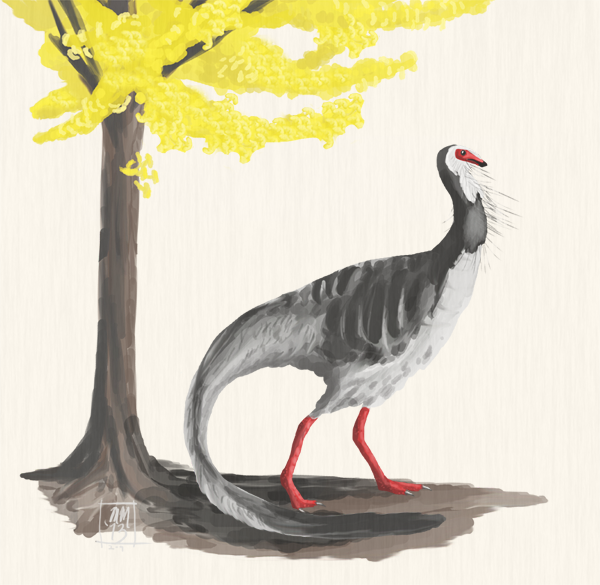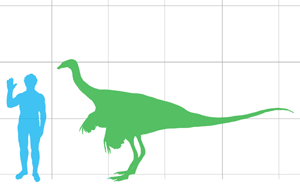home > natural history
Struthiomimus altus
"tall ostrich mimmic"

Creeping stealthily out into the clearing, an ornithomimid approaches the Miasaura nest which has been left temporarily unguarded. Using it's sharp beak, the stem bird cracks open several of the eggs and devours their contents. Noticing the giant hadrosaurids returning, the ornithomimid snatches up one last egg and retreads into the forest. In the safety of the dark, thick foliage, it consumes the last egg, but is startled by a sound from the woods. It is being hunted. Frightened, the swift dinosaur retreats farther into the woods, but it's attackers are already upon it. The Deinonychus back chase down the ornithomimid, digging into it with their deadly sickle claws. Slowed by loss of blood, the ornithomimid falls to the ground, and the Deinonychus feast.
This scene, taken from a short stop-motion film which was later re-used in a special hosted by Christopher Reeve in the late 1980s, is what truly sparked my interest in dinosaurs and solidified one of my favorite prehistoric creatures: Struthiomimus altus. In reality, Deinonychus lived several million years before Struthiomimus, and realistically, Struthiomimus could have easily outrun those slow little ambush predators, had they gotten out into the open. Struthiomimus, along with other ornithomimids, were built for speed, and (based on trackway evidence and hind limb ratio studies) could have reached speeds exceeding 40mph.
Ornithomimids were very specialized theropods, and had many derived (or "advanced") features. They lost the dewclaw seen on most theropods, and had unusually long necks, giving them a similar appearance to segnosaurs and alvarezsaurs. All three fingers were the same length, unlike most other theropods, and were very shovel like, possibly useful for digging up tubers or through muddy stream bottoms for arthropods and/or molluscs. Actually, the exact diet of ornithomimids is a mystery. All but the most primitive lacked teeth and had instead evolved duck-like beaks. It is likely that ornithomimids were omnivores, eating a combination of small animals, plants, and aquatic life. Struthiomimus altus is known from the late Campanian age of Late Cretaceous-period Alberta, around 75 million years ago. It was 15 feet long (4.3 meters), and about 8 feet tall (probably the earliest fact I can recall memorizing). It's well known from several skeletons, and was named by Louis Lambe in 1902.
A note on synonyms: Several people in the past have proposed that all ornithomimids are too similar to be separate genera, and all should be made into different species of Ornithomimus. Now, it's true that ornithomimids look a lot alike. I give the kid in Jurassic Park a lot of credit for picking Gallimimus out from the other candidates that look almost exactly like it. However, in my mind, there are differences significant enough to warrant separate genera, mostly skeletal dissimilarities, but also size and distribution issues.
Image Details:
Media: Digital, Adobe Photoshop CS3 with WACOM Bamboo
License: ALL RIGHTS RESERVED
DESCRIPTION
Length: 4.3m (15ft)
Location: Dinosaur Park Formation, Alberta, Canada
Time: Campanian age, Late Cretaceous (75ma)
CLASSIFICATION
Kingdom: Animalia
Phylum: Chordata
Class: Stem-Aves
Order: Ornithomimosauria
Family: Ornithomimidae
Genus: Struthiomimus
Species: S. altus
SYSTEMATICS
Sauropsida
Diapsida
Archosauria
Ornithosuchia
Dinosauria
Theropoda
Coelurosauria
Ornithomimosauria
Ornithomimidae
